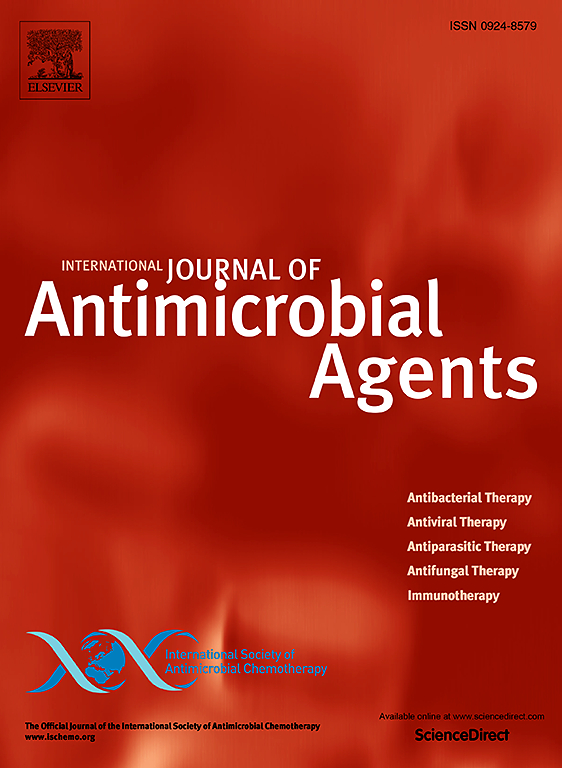药物暴露在巨细胞病毒耐药性发展中的重要性。
IF 4.6
2区 医学
Q1 INFECTIOUS DISEASES
International Journal of Antimicrobial Agents
Pub Date : 2025-05-13
DOI:10.1016/j.ijantimicag.2025.107537
引用次数: 0
摘要
人巨细胞病毒(CMV)是一种在健康人群中广泛存在的无症状病原体。然而,巨细胞病毒疾病在免疫功能低下的个体中可能危及生命,特别是移植患者。这种疾病的常规治疗是使用抗病毒药物,包括(val)更昔洛韦、氟膦酸钠、西多福韦、莱特莫韦和马里巴韦。亚治疗性抗病毒药物暴露是一种常见现象,可导致耐药巨细胞病毒的发展,这是疾病进展的关键因素。巨细胞病毒的突破常常导致移植物丧失、终末器官衰竭或死亡。通过优化细胞内抗病毒治疗的暴露水平,有可能改善患者的预后。因此,本文旨在探讨抗病毒暴露与耐药巨细胞病毒发展之间的关系。目前和新的巨细胞病毒疗法要达到最佳浓度有几个挑战。当前巨细胞病毒治疗方法的治疗指标和毒性谱较窄,导致其暴露于亚治疗状态,因此临床结果不理想。另外,新型抗病毒药物如letermovir和maribavir提供了改善的药代动力学特征。然而,这些药物与快速耐药性发展有关。总的来说,在了解抗病毒暴露与耐药性发展之间的关系方面存在明显的差距。因此,目前用于预测临床疗效的临床标志物缺乏可靠性。未来,应将与药物暴露相关的耐药性发展纳入临床试验终点,以了解暴露-耐药关系。有了这些关系的坚实的知识,更多的预测体外和体内的临床疗效的标志物可以确定。此外,还应进一步探索药代动力学-药效学模型和联合治疗方法,以改善CMV的管理。本文章由计算机程序翻译,如有差异,请以英文原文为准。
The importance of drug exposure in the development of cytomegalovirus resistance
Objective
Human cytomegalovirus (CMV) is a widespread pathogen which remains asymptomatic in healthy individuals. However, CMV disease can be life-threatening in immunocompromised individuals, particularly in transplant patients. This disease is routinely managed by antiviral agents, including (val)ganciclovir, foscarnet, cidofovir, letermovir, and maribavir. Subtherapeutic antiviral drug exposure is a common occurrence and can lead to drug-resistant CMV development, a key contributor to disease progression. Breakthrough CMV often results in graft loss, end-organ failure, or death. By optimizing intracellular exposure levels of antiviral therapies, it may be possible to improve patient outcomes. Therefore, this review aims to explore the relationship between antiviral exposure and the development of drug-resistant CMV.
Methods
A literature search was conducted in Pubmed database including keywords “cytomegalovirus”, “resistance”, “pharmacokinetics”, “pharmacodynamics”, “drug exposure”, “ganciclovir”, “foscarnet”, “maribavir”, “letermovir”, “cidofovir”.
Results
There are several challenges to achieving optimal concentrations of current and novel CMV therapies. Narrow therapeutic indices and toxicity profiles of current CMV therapeutics contribute to their subtherapeutic exposure and, hence, suboptimal clinical outcomes. Alternately, novel antivirals such as letermovir and maribavir offer improved pharmacokinetic profiles. However, these agents are associated with rapid resistance development. Overall, a distinct gap exists in understanding the relationship between antiviral exposure and resistance development. As a result, current clinical markers used to predict clinical efficacy lack reliability. In future, resistance development in relation to drug exposure should be included as a clinical trial endpoint to gain understanding of exposure-resistance relationships.
Conclusions
With solid knowledge of exposure-resistance relationships, more predictive in vitro and in vivo markers of clinical efficacy can be identified. PK/PD targets that account for free EC50/EC90 and viral load should be defined to improve clinical outcomes and reduce the risk for emergence of R/R CMV.
求助全文
通过发布文献求助,成功后即可免费获取论文全文。
去求助
来源期刊
CiteScore
21.60
自引率
0.90%
发文量
176
审稿时长
36 days
期刊介绍:
The International Journal of Antimicrobial Agents is a peer-reviewed publication offering comprehensive and current reference information on the physical, pharmacological, in vitro, and clinical properties of individual antimicrobial agents, covering antiviral, antiparasitic, antibacterial, and antifungal agents. The journal not only communicates new trends and developments through authoritative review articles but also addresses the critical issue of antimicrobial resistance, both in hospital and community settings. Published content includes solicited reviews by leading experts and high-quality original research papers in the specified fields.

 求助内容:
求助内容: 应助结果提醒方式:
应助结果提醒方式:


